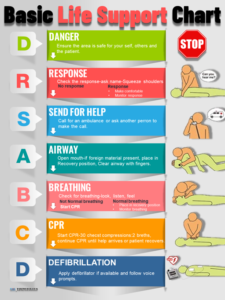The difference between single-use, limited use, and reusable chemical protective garments
4 min readChemical protective clothing is, according to OSHA’s Technical Manual (Section VIII, Chapter 1), equipment designed to “shield or isolate individuals from the chemical, physical, and biological hazards that may be encountered during hazardous materials operations.”
Not all chemically protective garments are created equal when it comes to durability. This variation is by design. While we would all love PPE that has a long life, factors such as cost, frequency of use, and the aggressiveness of the chemicals handled contribute to the expected life of a chemically resistant garment.

What are the factors that impact the service life of a chemically resistant garment?
The physical properties, the thickness of the garment material, whether the garment has seams, and if so how these seams are joined will dictate how quickly the chemical will permeate, penetrate, and degrade the material, rendering it unusable.
(For more on the selection and properties of chemical resistant garments see Chemical Protective Clothing Selection Guide.)
So, from the durability perspective, how many types of chemically resistant PPE are there?
OSHA’s Technical Manual (Section VIII, Chapter 1) breaks these garments into two categories:
- Disposable (for one-time use)
- Reusable
However, most manufacturers consider that the reusable category is too large and the gap between disposable and reusable too wide. In advertising their chemically protective garments, they separate them into three classes:
- Disposable (single use)
- Limited use
- Reusable
As a simple rule, the lighter and more inexpensive the chemical protective equipment is, the shorter its service life. The more expensive garments are usually more solid and have a longer service life.
Single-use (disposable) chemical protective garments
As the name suggests, single-use garments are designed for one-time use. Disposable PPE will be contaminated with hazardous substances. The used PPE itself should, therefore, be considered a hazardous material. Because of this, it needs to be disposed of according to applicable legislation, at designated facilities, and separately from regular waste.
These garments are usually light, thin and flexible, which makes them desirable in many conditions. These qualities come with the compromise that they can be easily damaged and it does not take long for the chemical to permeate, penetrate and degrade the material. They are usually cheap enough that from an economic perspective we are better off disposing of than decontaminating them.
If these garments have seams they are usually serged seams (a seam produced when three threads are interlocked around the raw edges of two pieces of material for a strong, stress-resistant seam).
Some examples of single-use chemical protective garments are latex and nitrile gloves, and asbestos abatement suits.
Limited use chemical protective garments
Limited-use garments can be worn until they are damaged, altered, or contaminated. They are more durable than the single-use garments and can be used a number of times before their physical characteristics are altered to the point when they don’t offer adequate protection to the end-user. Since permeation, penetration, and degradation are not easy to assess by the end-user these garments should be discarded after a number of uses (indicated in the manufacturer’s breakthrough guide).
If these garments have seams they are usually bound (a bound seam is tightly sewn with a reinforced outer binding to increase seam strength and barrier).
To avoid liability and recognizing that it is hard to properly assess the integrity of chemical resistant garments some manufacturers, such as DuPont, prefer to designate their garments as limited use garments, even if they satisfy the conditions for reusable garments.
Reusable chemical protective garments
Reusable protective equipment is the most durable of chemically resistant garments and is repeatedly subjected to chemical exposure. These garments can be worn multiple times if the equipment has not been damaged during use and the barrier performance of the material has not been compromised. To avoid the build-up of chemicals into the garment and prolong its service life, reusable chemical protective garments should be decontaminated after each use.
Decontamination can be done through physical decontamination (e.g. washing the equipment), inactivation of the contaminants (through a chemical reaction or sterilization) or a combination of both methods.
Examples of such garments are fully encapsulated suits (compliant to NFPA 1991 and/or EPA Level A) or non-encapsulated suits (compliant to NFPA 1992 and/or EPA Level 2).
The materials in these garments are usually more rugged. This gives them the durability, but it usually sacrifices flexibility and mobility and incurs a substantial increase in price.
These garments usually have welded seams (materials are lapped and thermally sealed) and sometimes joints and articulations not dissimilar to astronaut suits.
Considerations when selecting protective clothing
All these suits come with advantages and disadvantages. When choosing among a single-use, multiple-use and reusable chemical garment think of:
- What qualities do I need in my garment – flexibility, durability, grip,.etc
- How often do I perform the task
- What are we exposed to and how often (immersion, splash, etc.)
- What is the likely outcome of garment failure
- How much are we willing to pay
- Decontamination costs



